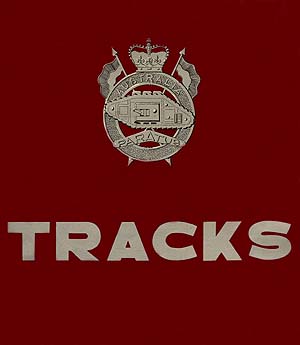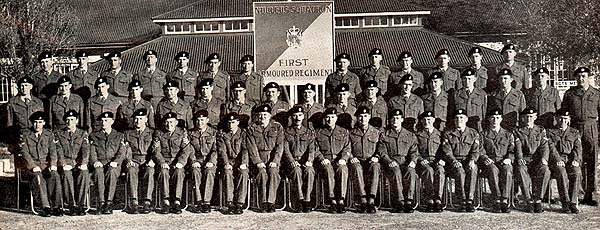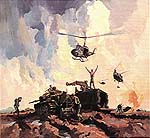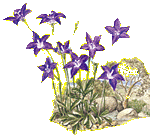Tracks Magazine - August 1955


A couple of decades ago I was travelling through northern NSW and called in to see Archie McDonald, an old 1 Armoured Regiment LAD mate. Archie had kept his copy of the first issue of the Regiment's glossy magazine, Tracks — August 1955. It is this magazine that is re-produced below
Tracks Magazine
Index
Foreword Preface Principles of Employment of Armour Tracks To Tradition Keep An Open Mind Review of Squadron Activities Regimental Headquarters Headquarters Squadron Reconnaissance Troop A Squadron Notes B Squadron Notes Regimental Training Troop Light Aid Detachment, RAEME Signals Troop, RASigsIndex (cont)
Review of Allied Armour Tanks in The Jungle Korean Sidelights Equipments 1954 .. A Royal Occasion On Parade Elevating Gear Officers' Mess Notes Sergeants' Mess Notes In The Realm of Sport It Could be You The Adjutant's Dilemma While Others Sleep [et al] Beauchamps Own Epilogue Free Verse From A Free Thinker
Nucleus Squadron

O.C.:Maj. G. McLEAN
2/I.C.: Capt. L. R. J. COULTON
S.S.M.: Sgt. O. H. CROSS
It was decided late in 1952 to form an Armoured Squadron to be based in New South Wales. This Squadron was to be a nucleus for a divisional regiment, R.A.A.C., and meantime was to provide tanks for co-operation with infantry for training and exercises in Eastern Command.
The Squadron was actually started in late September, 1952, from members of 1 Armd. Regt. A cadre was formed consisting of the O.C., Major C. Duke, and approximately 20 other ranks. The Squadron Sergeant-Major was W02 Gosson and other non-commissioned officers were Sgts. Morgan, Thomson and Turton-Lane, and Cpl. Dorling.
The cadre established itself under canvas at 2 Base Ordnance Depot, Moorebank. Recruits started to arrive in October, 1952. Recruits continued to arrive until the Squadron was up to and, later, well over strength. The second officer, Lieut. F. W. Deane, arrived in October, 1952, and the training started.
There was a serious lack of training stores, but the First Royal New South Wales Lancers, at Parramatta, helped considerably by lending a jeep, a 3-tonner, B.E.S.A.'s and other training stores.
The training was strenuous and was designed to get the Squadron both fit and well-trained in their armoured work. The biggest activity at this time, November, 1952, was a route march to Garie Beach, a distance of 30 miles. The Squadron spent the night there and marched back next day.
On arrival back at Moorebank, word was waiting that the tanks were ready to be collected at Bandiana. Sgt. Morgan and a party were sent down to take them over and bring them back.
At this time there was quite a flap. There was no suitable unloading ramp in the area. However, the New South Wales Railways got on with the job and completed an end-loading ramp at Glenfield, two days before the Centurions arrived.
The arrival of the tanks generated tremendous enthusiasm, and all nine tanks were fitted up and serviced before the Christmas leave period.
Early in 1953, an intensive programme of wing training was conducted and the individual training of Squadron members brought up to the mark on the Centurion. Local units were considerably concerned about the firing of the 20-pounder guns on the Green Hills Range. However, after the first gunnery practices, their fears were dispelled.
On the 29th January, 1953, a third officer arrived, Lieut. M. G. Brooke, an ex-C.M.F. officer, with a provisional commission.
In March, 1953, No.1 Troop, under Lieut. Deane, went by rail to Singleton, where it gave demonstrations to units of First Armoured Brigade, who were doing their annual camp. These demonstrations lasted a week and the tanks remained for more demonstrations, a fortnight later, with Fourteenth Infantry Brigade units.
This excursion saw the first serious damage to the tanks. One Centurion crossing a deep, narrow creek struck the bank with the gun and badly distorted the elevating gear case. The replacement has only recently arrived and this tank is now being repaired in Eastern Command Base Workshops.
At Easter, 1953, Lieut. Brooke managed to bog his tank in Harris Creek. It remained in the creek from Thursday afternoon until Saturday. It took a Kenilworth wrecker, Diamond T prime mover and another Centurion to pull it out. The tank was flooded and even now we are getting repercussions, the latest one being an unserviceable rotary base junction, caused by the effects of mud and water on the electrical connections.
A fourth officer, Lieut. D. A. Miller, arrived on the 24th March, 1953, and the Squadron moved to East Hills Migrant Hostel during April.
In July, 1953, Lieut. Brooke was transferred to a qualifying course.
The rest of 1953 was taken up with a continued programme of individual and collective training and conducting of courses for C.M.F. personnel and A.R.A. cadres. During this period, National Service started corps training, and depended initially on a large measure of assistance from the Squadron.
Capt. L. R. J. Coulton arrived as Adjutant/Quartermaster on 22nd October, 1953, and 2/Lieut. R. H. Herford as troop leader in November, 1953.
Early in 1954, more collective exercises were carried out, becoming more ambitious, culminating in a night exercise. This last exercise included an alarm and breaking leaguer by night, in which the highlights included the chasing of Capt. Coulton by a Centurion through thick scrub, where neither could see the other and the tank crew did not know they were chasing anybody.
Two more 2/Lieuts., R. B. Donaldson and R.Driver, arrived in March and April, and a new O.C., Major A. E. G. Strong, took over from Major C. Duke, in May, 1954.
At about this time the great idler wheel bearing crisis developed, and the tanks were practically immobilised for the remainder of the year. A few were available to take part in demonstrations and for running small training wings tempo had been cut down considerably.
Just before Christmas, 1954, the Squadron moved from East Hills to a new camp at Old Holsworthy. Frantic work by the engineers got the camp to a fairly livable state and now the work will be finished just before we leave. At this stage, Lieut. D. A. Miller was replaced by Lieut. L. G. O'Donnell.
The idlers were coming back from workshops and a few tanks becoming mobile when another new O.C., Major G. B. McLean, took over on the 1st March, 1955.
A concerted effort got six tanks on the move again, the three others required major workshop attention.
A series of small exercises in co-operation with Four Battalion, Royal Australian Regiment, and one with Thirteenth National Service Battalion, kept the Squadron busy until the time came to move.
After all the alarms and excursions, rumours of overseas service and other high hopes, the word has at last arrived. "Nucleus Squadron will rejoin parent unit ... by 1st June, 1955." So it's back to Puckapunyal again and the end of the jigs of an independent existence.
THE PARATUS CUP
The culmination of the training year is the Paratus Cup competition and without doubt the competition is the highlight of the yearly life of the Regiment. Keenness and enthusiasm amongst members of the various troops runs high, as the cup is the prized possession of the victorious troop for the following year. Not only does the victorious troop win the cup, but with it goes the right to fly pennants of the Regiment's colours from their wireless aerials for the ensuing year.
The competition consists of two phases, which each competing troop completes in turn. The first phase is a B.E.S.A. shoot on the A.F.V. range, the troops firing from static positions. This phase deals only with fire orders, speed of engagement of the co-axial weapon and accuracy of fire. However, the real test comes in the second phase, which is a battle run, and the competing troop is judged on such things as orders, wireless procedure, map reading, individual tank movement, troop tactical movement, troop control, and accuracy of co-axial fire.
The 1954 Competition
The competition was held during late November and the sabre squadrons each provided two three-tank troops as competitors.
Our congratulations go to all members of 3 Troop, B Squadron, for winning the Paratus Cup for 1954.


